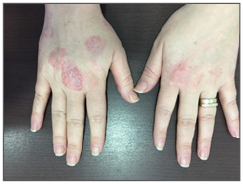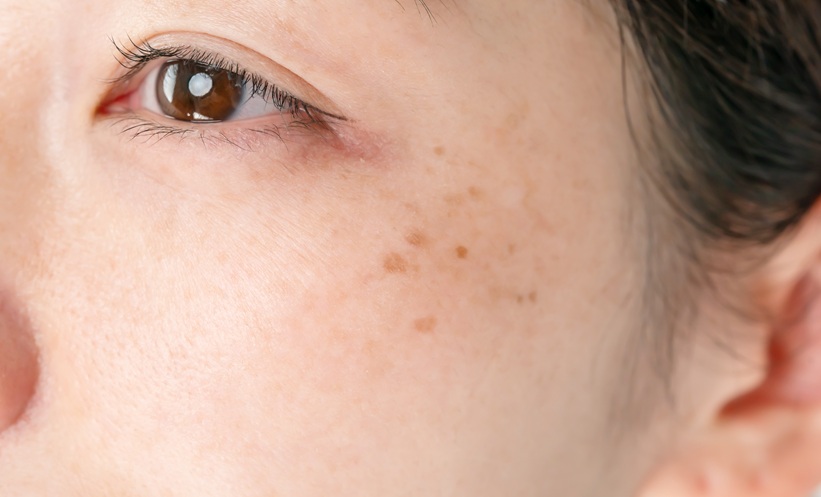During their reproductive years, women may present with various menstrual-related disorders. A few women may develop a rare cyclic dermatologic condition known as autoimmune progesterone dermatitis (AIPD).1 First described in 1921, AIPD is associated with increased progesterone levels during the luteal phase of the menstrual cycle, caused by an immune reaction to endogenous or exogenous progesterone.2,3 Often confused with other dermatoses, cutaneous manifestations of AIPD vary and may present as eczema, folliculitis, stomatitis, mucosal lesions, papulovesicular lesions, papulopustular lesions, vesiculobullous reactions, erythema multiforme, urticaria, angioedema, and even anaphylaxis (progesterone-induced anaphylaxis).1,4
A 27-year-old secundigravid female, 13 weeks pregnant and undergoing exogenous progesterone therapy, was referred to our clinic for presentation with annular and round erythematous, scaly, pruritic plaques, some with vesiculation, excoriation, and impetiginisation localised on the dorsal side of her hands (Figure 1). The lesions slowly developed after the initiation of oral progestative treatment to prevent miscarriage. During her first pregnancy, which resulted in a spontaneous abortion, she also received progesterone therapy and noticed the appearance of less severe, similar eczematous cutaneous lesions. She described monthly transitory plaques ever since her menarche, 10 days prior to the onset of menstrual flow. The occurrence of skin lesions associated with the introduction of progesterone therapy on two occasions and observations from a clinical examination led us to the diagnosis of AIPD. Topical treatment was recommended (a short course of emollients and dermatocorticosteroids) and a multidisciplinary evaluation, both endocrinological and gynaecological, was carried out to assess specifically adapted pregnancy treatment options.

Figure 1: A 27-year-old secundigravid female, 13 weeks pregnant and undergoing exogenous progesterone therapy, presented with round erythematous, scaly, pruritic plaques, some with vesiculation, excoriation, and impetiginisation localised on the dorsal side of her hands.
This rare autoimmune complex syndrome that most commonly occurs during the luteal phase of the menstrual cycle presents as a wide spectrum of cutaneous manifestations that correlate with increased progesterone levels.3,5 Symptoms of AIPD appear 3–10 days prior to menses due to the progesterone fluctuations in the luteal phase, and symptoms resolve 2 days after the outset of the menstrual flow.4 The onset of AIPD is variable and has been described as occurring spontaneously at menarche, peripartum, and during pregnancy, which may impact the symptomatology of this disease.4,6
With a poorly understood pathogenesis and polymorphic characteristics, AIPD may easily be misdiagnosed.6 A thorough clinical history and evidence of progesterone sensitivity may lead the physician to suspect progesterone autoimmunity and differentiate AIPD from other variable skin disorders.1,7







